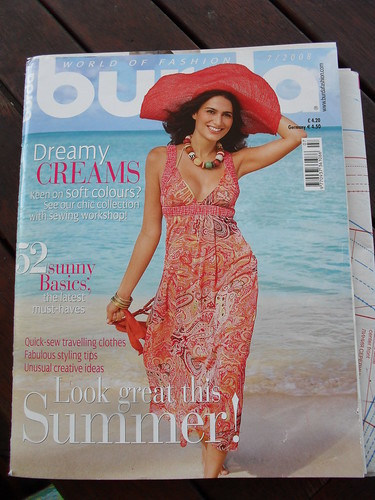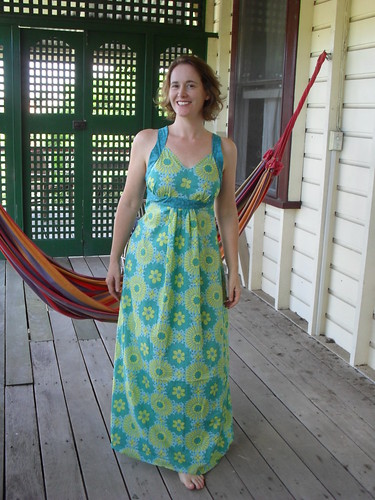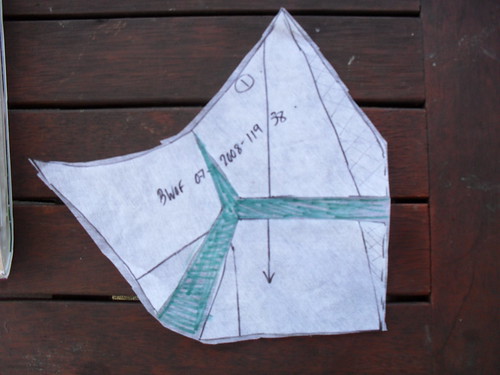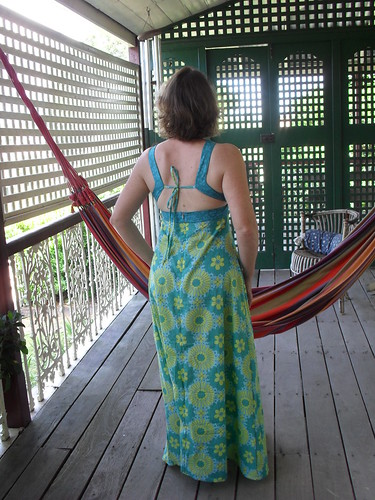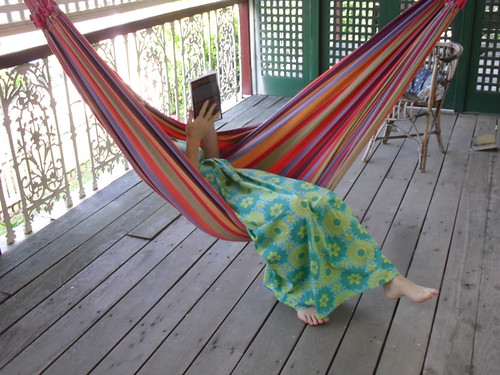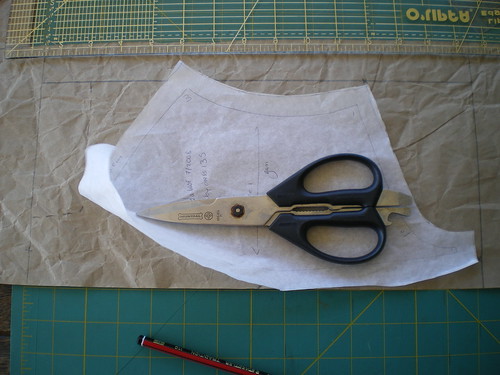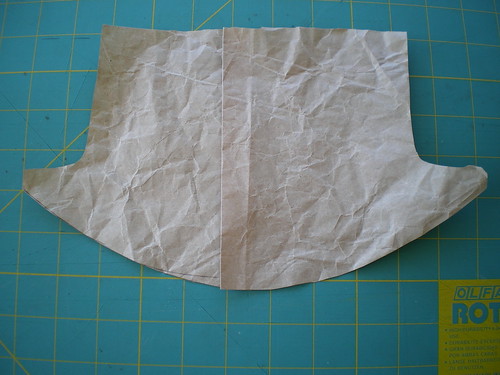I love smocking, have, over the last 12 years or so smocked at least a hundred garments, but I have never had an in-person lesson. I learnt from magazines and books. I have read a lot about smocking and embroidery, have received favourable critiques of my work from Show judges, and the Smocking arts guild of America, but I make no claims to formal training. I am saying this because I am about to get on my soap box!
This baby dress is from Burda World of Fashion, July 2008, number 135. It is a special designer feature of the childrenswear shop Jacardi. The pattern uses English style smocking, where the fabric is gathered into regular pleats, then geometric stitches are applied to manipulate these pre formed pleats.
When I first saw this, aside from being pleased for some beginner, I had little interest in this pattern, I thought, a nice easy baby bishop for someone who wants to try smocking, lovely. I have many beautiful and complex smocking projects on my list, this is not the sort of thing I am smocking at this point. However, out of interest in my smocking hobby, and in case this dress used something new to me, I looked at the instructions and the line drawing. I was horrified.
In these two photographs, even I will admit that this dress looks OK. In fact, I will probably give it to my niece, but I believe that if a beginner had attempted this pattern, with the Burda instructions, they would be put off smocking for life. I have made this dress solely so that I can write a scathing review of it, and hopefully save an almost smocker from a project designed to fail.
The first thing I want to point out, is that the instructions for the smocking stitches themselves are not just scanty, but incorrect. There may be a translation issue, but a backstitch is not the same as the cable stitch used at the top and bottom of each wave. A backstitch will give you a completely unstretchable stitch, and prevent you from shaping the neck. If you use a backstitch, as Burda advises, your dress will be toast.
The instructions for what appears to be a 5 step wave pattern are the worst smocking instructions I have ever seen. I know I am spoilt with Australian Smocking and Embroidery and Sew Beautiful magazines, so I also looked at the instructions for smocking in an Australian Stitches article, a Handmade magazine project (in less space than used by Burda), a McCalls sewing book, a Vogue and a Simplicity printed pattern and a 1930's pamphlet with no diagram. These Burda instructions were still the worst by far. However, you may be able to follow most of the steps and end up with something approximating a trellis section, but Burda has completely missed the cable at the bottom of the wave before changing direction. If you get this far and follow Burda's instructions, your dress will be toast.
What I have used, is what I think Burda meant, a wave pattern, with a second wave pattern .25 cm above, along each gathering line. Looking with my magnifying glass, the dress in the magazine seems to use a 5 step wave. This was far too stretched out on the size 3 month version I have used, so I substituted a 4 step wave for a similar appearance.
This is a really simple stitch pattern, called wave, trellis, travelling zig-zag and various other names as it is so commonly used. There are good instructions for this pattern all over the internet.
index to smocking stitches,
4 step wave pattern are just two I found with a google search.
Unfortunately, the awful smocking stitch instructions are not the worst issue with this dress. Basically the smocking has been used solely as adornment. The gathering and elastic properties of the smocking have not been used in the design of the pattern, and in fact work against the dress design, making both the smocking and the garment construction uneccesarily difficult.

Here you can see some of the problems. The pleats at the sleeve seams are shapeless and bubbling. This is not the fault of the smocker, but of the pattern. The pleats in this region cannot be on grain, as the cut of the dress prevents this. You can also see the messiness of the pleats in the neckline seam. Despite careful stitching, using the pattern and construction instructions given in the magazine, this was an inevitable result. You may also be able to see that the pleats are very widely spaced at the lower line of smocking stitches. I have given the pleats plenty of slack, but this dress will tend to have a "turtle neck" and be poorly shaped on the baby unless the neck is stretched out after each wash. This is not the sort of thing for which you want to make a new mother responsible!

Here you can see how wide this dress is at the hem. I think this may be overpowering on a 3 month old baby. The thing that really annoys me about the width of the hem, is that although there is not enough fabric width at the neck and sleeves to give nice close pleats, the dress is an a-line, with much more fabric width at the hem than at the bodice. It looks as if the designer added the skimpiest amount of fabric to the bodice, to almost allow for the pleats, but didn't realize that this would also make the hem wider, and that the further hem width added by the a line cut could have been transferred to the bodice without making the dress this oversized.
I have several other issues with #135, for instance, the instructions for the sleeve seams confuse "neck" with "side seam", the under arm finish is messy, but these are not project destroying issues.
Today, I redrew this pattern to the way I think it should be. I have a lot of bishop patterns, so I really don't need to do this,as I am sure any of the patterns I own will be better than Burda's, but I will make up a dress from this redraw, and see if I know what I am talking about!
